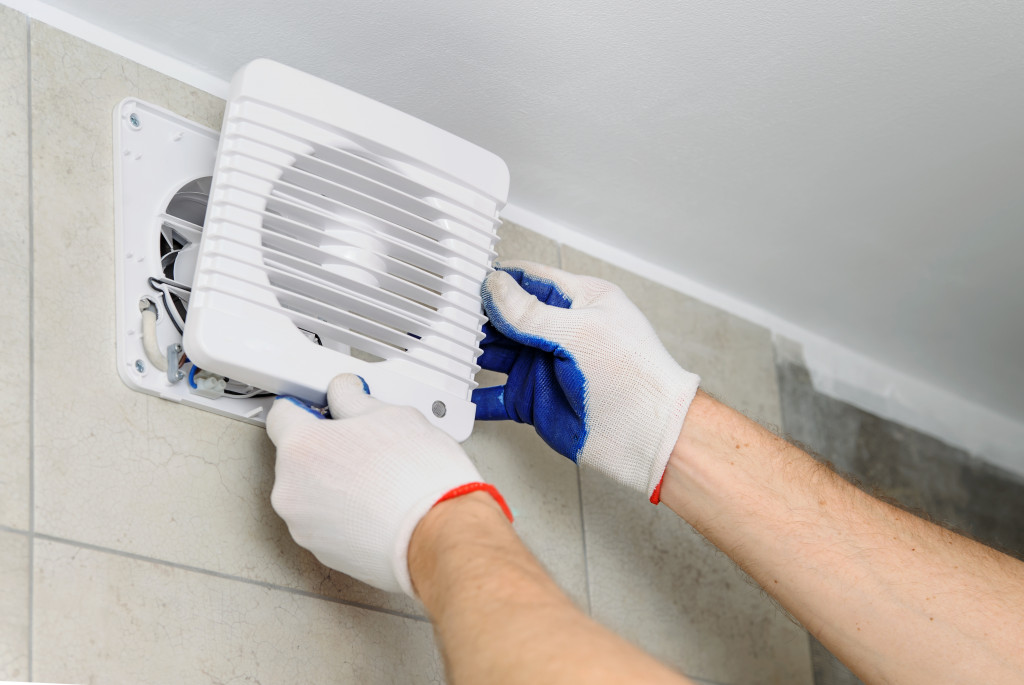- Maintain proper ventilation, control moisture levels, and manage water damage to prevent mold growth.
- Use dehumidifiers and air conditioners to regulate humidity levels.
- Regularly clean and inspect hidden areas for signs of mold.
- Utilize professional water damage restoration in cases of significant water damage.
- Monitor indoor humidity levels with a hygrometer and keep them within 30-50%.
Welcome to a comprehensive guide on preventing mold-related illnesses in your home. Mold is a common problem with serious health consequences if not addressed promptly. It thrives in damp and poorly ventilated areas, and exposure to mold spores can lead to various health issues, including allergies, respiratory problems, and even infections. By following these five tips, you can effectively minimize the risk of mold growth and protect yourself and your family.
1. Maintain Proper Ventilation
Adequate ventilation is crucial in preventing mold growth. Stagnant air and high humidity create an ideal environment for mold to flourish. Good ventilation helps to control humidity levels, discouraging mold growth and promoting a healthier indoor environment.
Here are some tips on how to maintain proper ventilation:
Open Windows Regularly
Ensuring proper ventilation begins with opening windows regularly — even in the winter months — to promote air circulation and reduce indoor moisture levels. When weather permits, keep your windows open day and night for maximum airflow.
Turn On Exhaust Fans

Turn on exhaust fans in your kitchen and bathrooms whenever possible. These fans help to draw damp air outside while preventing excess moisture from accumulating indoors. Consider installing a timer switch so you don’t forget to turn them off after use.
Install Dehumidifiers
Installing dehumidifiers in basements, laundry rooms, and other areas prone to higher humidity levels can help keep mold at bay by reducing indoor moisture. Dehumidifiers are also useful for households with many houseplants, as these appliances help prevent the build-up of excess moisture in the air.
Monitor Humidity Levels
Using a humidity monitor can help you monitor moisture levels in your home and ensure they stay under control. If levels exceed 50%, open windows or turn on fans and dehumidifiers where necessary to reduce indoor humidity. Regular monitoring is key in preventing mold growth indoors.
2. Control Moisture Levels
Moisture control is vital in preventing mold growth. Regularly inspect your home for any signs of leaks, water damage, or condensation buildup. Repair leaking pipes, roofs, or windows promptly, and ensure proper drainage around your property. In areas prone to moisture, such as bathrooms and kitchens, use waterproof materials for walls, floors, and ceilings. Be vigilant in drying wet surfaces, especially after spills or flooding, and use moisture-absorbent materials like silica gel or activated charcoal in enclosed spaces to reduce humidity levels.
3. Properly Manage Water Damage

Water damage can be a major source of mold growth, so it’s important to prevent and repair it promptly. In cases of significant water damage, utilize professional water damage restoration immediately. They will inspect the affected area for any signs of mold or structural damage and implement the necessary repairs. These professionals can also advise you on moisture control and mold prevention.
4. Regularly Clean and Inspect
Regular cleaning and inspection are essential to prevent mold growth and catch potential issues early on. Pay close attention to moisture-prone areas like bathrooms, kitchens, and basements. Clean and dry surfaces regularly using mold-inhibiting cleaners or a mixture of water and vinegar. Pay particular attention to overlooked areas, such as behind appliances, under sinks, and crawl spaces. Regularly inspect hidden areas for any signs of mold, such as discoloration, musty odors, or peeling wallpaper.
5. Maintain Proper Indoor Humidity Levels
Keeping indoor humidity levels in check is crucial for mold prevention. The ideal humidity range is between 30% and 50%. Invest in a hygrometer to monitor humidity levels in different areas of your home. If the humidity exceeds the recommended range, use dehumidifiers or air conditioners to reduce moisture. Additionally, ensure proper ventilation and avoid activities that increase humidity levels, such as drying clothes indoors or using unvented gas appliances. Maintaining optimal humidity levels creates an inhospitable environment for mold growth.
In Summary
Preventing mold-related illnesses requires proactive measures to control moisture, maintain proper ventilation, and regularly inspect your home. By implementing these five tips, you can significantly reduce the risk of mold growth and protect the health and well-being of your family. Remember to address water damage promptly, manage humidity levels, and adopt a regular cleaning and maintenance routine. Doing so will create a healthier living environment and minimize the potential health risks associated with mold.
Mold-related illnesses can be serious, so taking the necessary steps to avoid them is important. With these five tips in mind, you can keep your home mold-free and safe for everyone who lives there.

